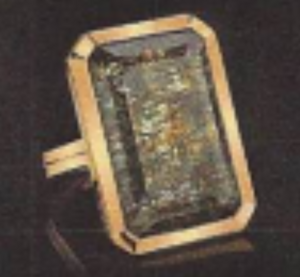Rad_Fan
Ideal_Rock
- Joined
- Sep 1, 2018
- Messages
- 3,173
The testing required to analyse an inclusion trapped in diamond is very expensive. So no. not unless the mineral breaks the surface would it be even slightly practical.Curious....when diamonds have inclusions such as the garnets, is it listed on the report as a garnet (assuming it's listed as a grade setting inclusion), or just as a crystal?
The testing required to analyse an inclusion trapped in diamond is very expensive. So no. not unless the mineral breaks the surface would it be even slightly practical.
@Demon I would expect that the Lotus Lab can id inclusions fully contained withiin the host, since they are doing this for other stones & have published such results; the questions might be: #what they may want to put on a report about a diamond since the lab does not offer services regarding diamonds [they may only want to tell you what you have and give a summary of lab results, without calling it all a 'report' or even signing, like a research lab would do if they take the job]. Or, a commercial lab technically capable to do the job may take it - I know one or two that, sometimes, have the time.
I'd expect to pay a few times the price of a usual report, up to 2K.
2c
It may be possible - but since they are way more rare than red and brownish red garnets - I want one too!I don't study them but for me any gemstone crystal, other than a diamond crystal, would be interesting. I'd love to see one with a tsavorite inclusion.

It may be possible - but since they are way more rare than red and brownish red garnets - I want one too!
This is info from a De Beers diamond education course (that is surprisingly good - only found one mistake so far):
The two most common upper mantle rock types in which diamonds grow are peridotite and eclogite. Peridotite is the dominant rock type of the upper mantle; it comprises olivine (peridot is the gem form of this mineral) and other minerals rich in magnesium and/or chromium such as orthopyroxene, clinopyroxene (chrome diopside), pyrope garnet and chrome spinel. Diamonds which have grown in peridotite may contain inclusions of these minerals.

In contrast, seismic and petrologic evidence shows that eclogite is volumetrically less abundant (~20%) than peridotite in the mantle. However it is a major source of diamonds. Eclogitic rocks are dominated by almandine-pyrope garnets and clinopyroxene, although accessory minerals such as kyanite, coesite and rutile are found. Eclogite typically forms when mafic igneous rocks (typically basalt or gabbro) descend into the mantle in subduction zones and as a result undergo high-pressure metamorphism. Subduction recycles material including carbonate rocks such as limestone, marble, and dolomite into the mantle. Organic material, may also be subducted, and the detection of its presence in certain eclogitic diamonds has been interpreted by some researchers to be evidence of recycled organic carbon, incorporated during diamond growth.
Like the ring rutilated quartz Angalina Jolie wore in the movie Malificent. We had that ring instore for sale last year. Proceeds to building schools in war zones.The earth is really pretty damn fascinating. Rutile.....maybe a diamond with some gold rutile needles? I know needles aren't uncommon, but a bunch of them, like in rutilated quartz could be cool.


Try a strong neodym magnet - if spessartine(rich) you will maybe see a reaction - they are large enough.